The Siracusa 16 is the new addition to the Siracusa concept family, this one with a larger soundbox. Far from being a catch phrase, this guitar is 100% acoustic, 100% electric!
All guitar makers must ask themselves what is their role in the guitar making business. In my case, my clients want custom instruments, so that is the easiest answer: I try to materialize the guitars that my clients dream. However, I always felt the need to develop a guitar concept that was so full of common sense that players would accept it as it is. I won’t mention any example, we all know them. In contrast with this, the guitar market is full of guitars that show only cosmetic/crazy variations on these paragons… and are sometimes sold as new concepts. I never really worked consciously trying to make an archetypal guitar, but that was the background music in my brain, so to speak. I have been recollecting ideas from everywhere, many times from my clients, other times from fellow makers, others from myself. Then, in what I compare to some kind of critical mass process, they started to settle down three or four years ago with the Berlin-II and Siracusa designs. This time it is the turn of the Siracusa-16, a guitar that not only looks gorgeous: it breathes common sense.
Neck: Laminated construction, with graphite reinforcements at key locations. It has fifteen frets out of the soundbox, the scale length is 25.5″ the nut width is 43 mm and the string spread at the nut is 35 mm. Just like the 15-inch Siracusa, its Gotoh Stealth machines are embedded inside the peghead. The frets are made of stainless steel, and the fretboard is curly/mottled ebony. The faceplate is marbled ebony.
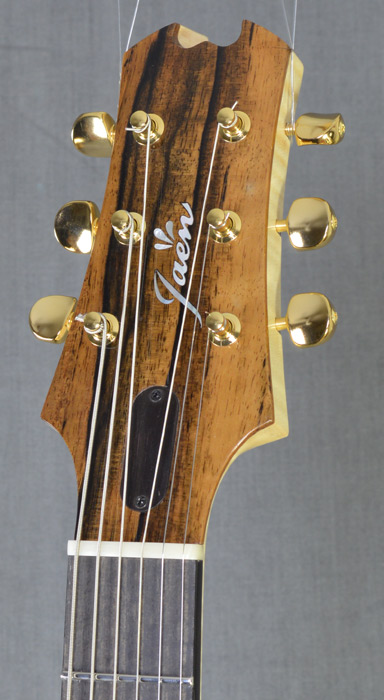
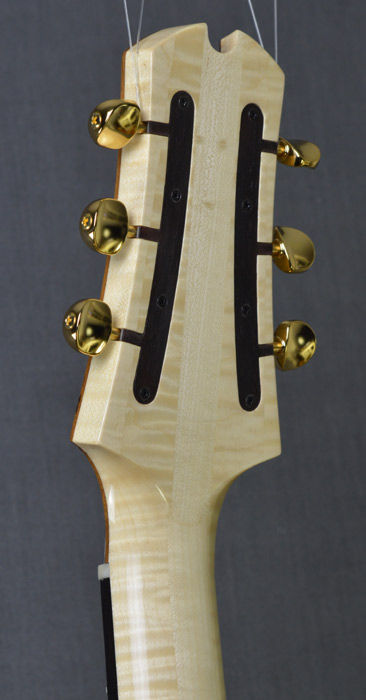
Both the machines and the truss rod nut have ebony covers that look great. However, as any woodworker knows, wood as thin as this will break, even more when it has screws so close to its edges. To avoid it, I bonded the ebony on a fiberglass laminate that supplies the necessary toughness. Beautiful and functional: just as it must be.
Body: The soundbox has a width of 16 inches at the lower bout. It is shorter than my other 16-inch designs, so it has its own identity. The top and back are hand carved and their graduations are extremely light, making this a very responsive guitar. The X-braces are also very light:

There are graphite reinforcements at the neck block also.
The back and sides are Zebrano:
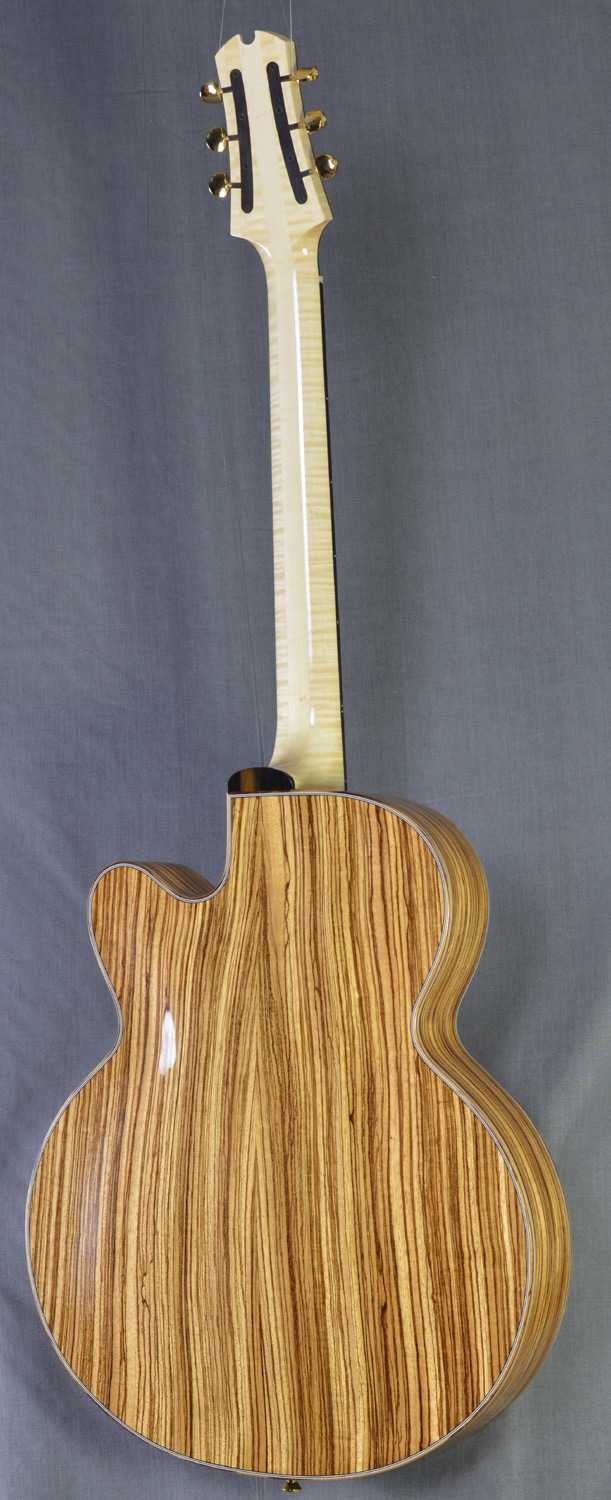
This wood has a strong character, but you won’t find it in archtops mainly due to its interlocking grain, which makes it very difficult to carve. But I like it a lot — so much that I used it also for the bindings:
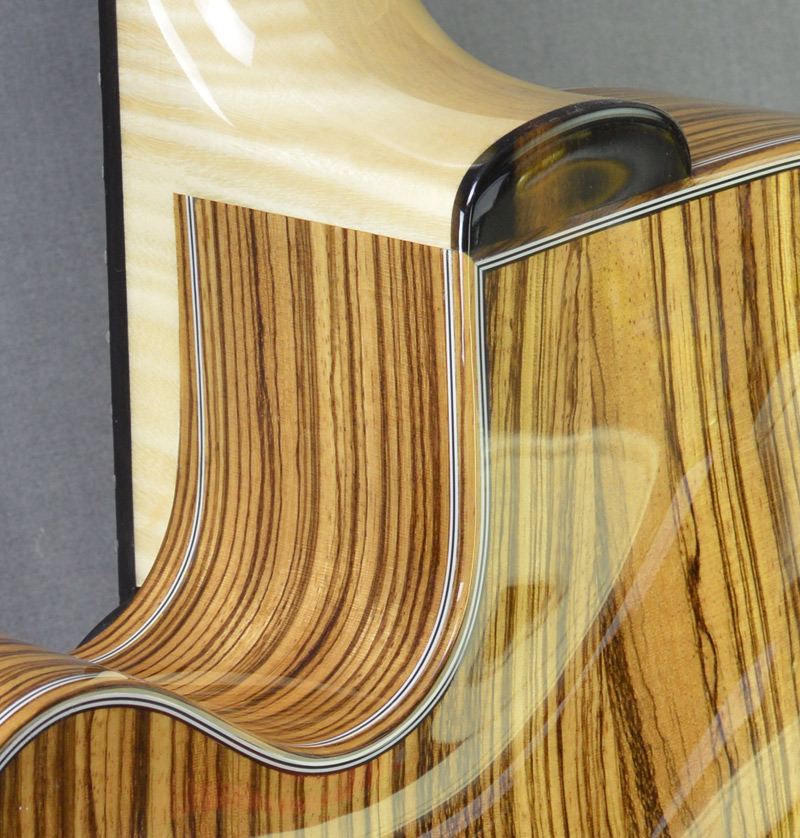
The top is hand carved in Spruce:
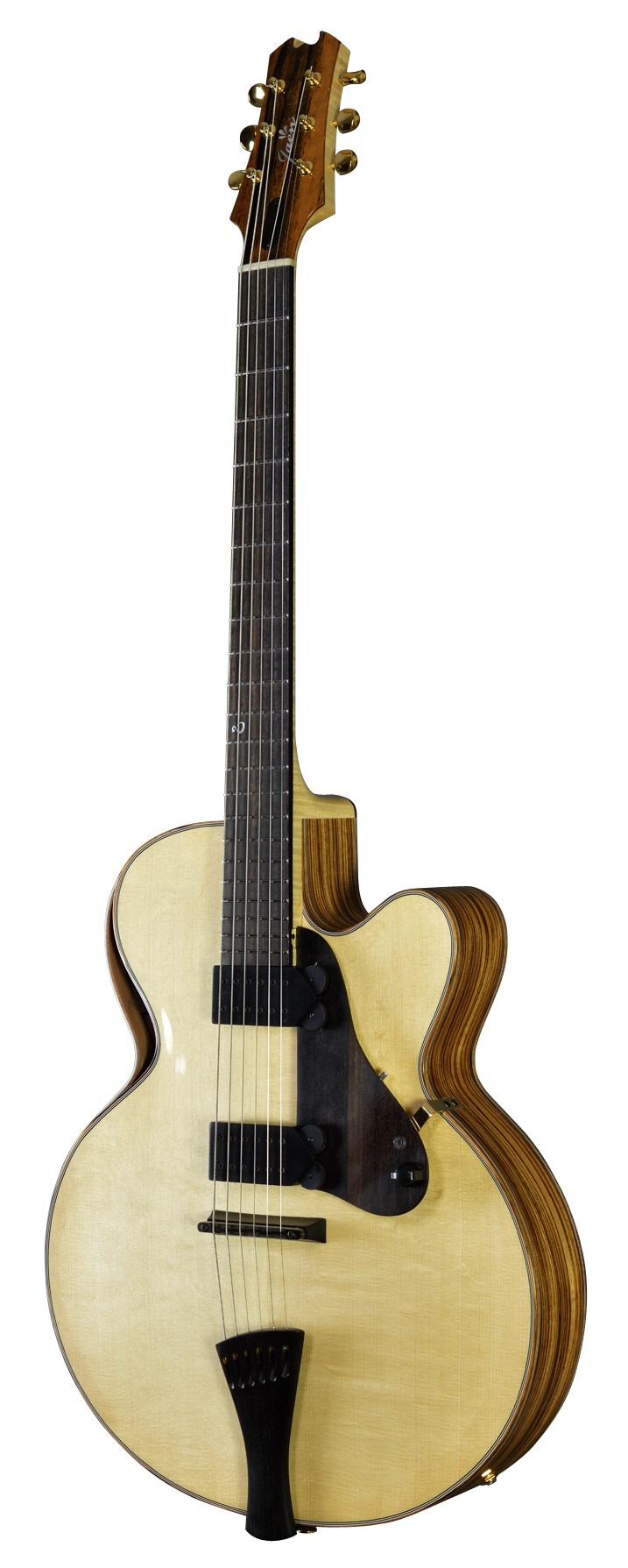
Fittings: The pickguard is a structure with a carbon fiber skeleton, 2 mm thick, embedded into a hollowed out ebony piece, which is the external part, the only one visible. The pickups are joined to the pickguard, which integrates the pots, the pickup selector and a switch:
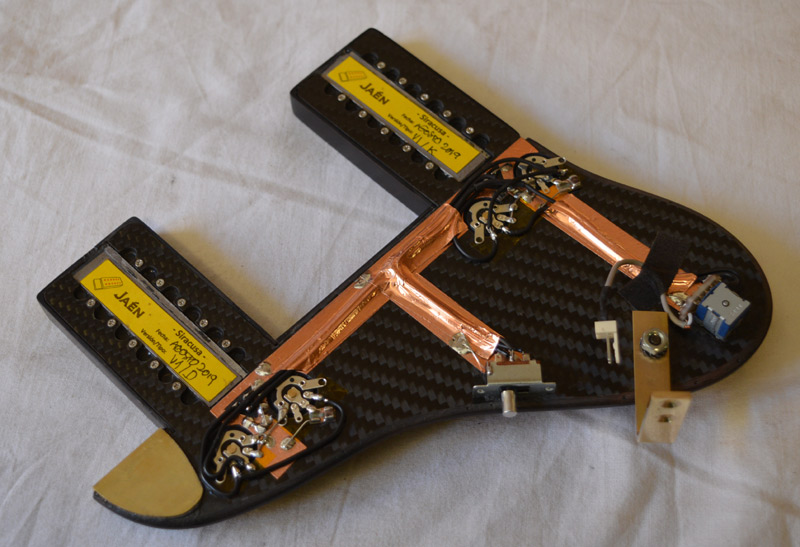
I have been making pickups since many years now, and I feel very proud of those that you see here, both for the elegant construction method (made from solid pieces of ebony that are hollowed out to install the bobbin-less delicate coils) and for the tone. They have two rows of polepieces, just in case you want to try bronze strings (wound strings deliver a much lower level than plain strings, so the polepieces must be adjusted to keep the balance. Usually, a single row of polepieces is not enough to correct the problem) The result? Don’t expect the usual tinny tone of floating pickups, these are different.
The pickups enclose the volume and tone controls in such a way that they can be used while playing, opening new possibilities for some players. The potentiometers can be replaced if needed.
The pickguard has also a rotary pickup switch, and an additional switch that changes both pickups to single coil. With this set to single coil and in the middle position of the pickup switch, the resulting pickup is a humbucker.
I used SMD capacitors, with C0G dielectric. I don’t believe strange things about capacitors, but I prefer to use dielectrics that are stable and don’t have any piezoelectric characteristics (most ceramics do).
The pickup switch is very small, but it is a quality component. I made a small printed circuit for it, so that the connections are clean and reliable.
Note: I have been improving this design for every Siracusa that I have built. Currently (April 2020) I use a thin printed circuit board and different potentiometers, that are smoother and with a much longer rotational life (100.000 cycles instead of 15.000 of the units shown above):
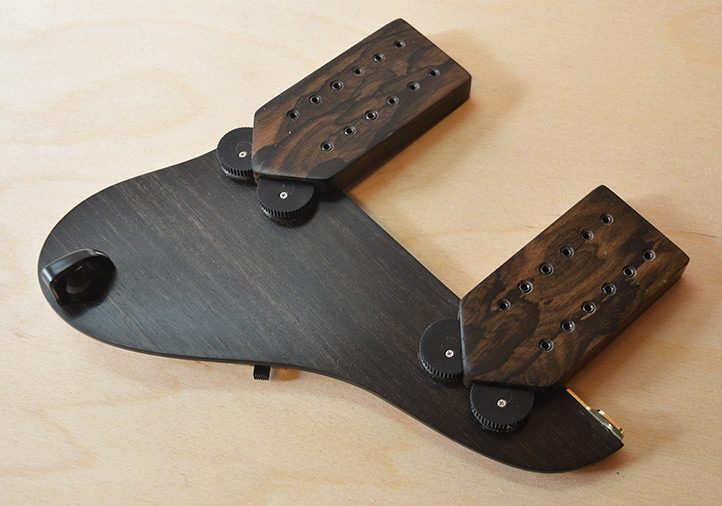
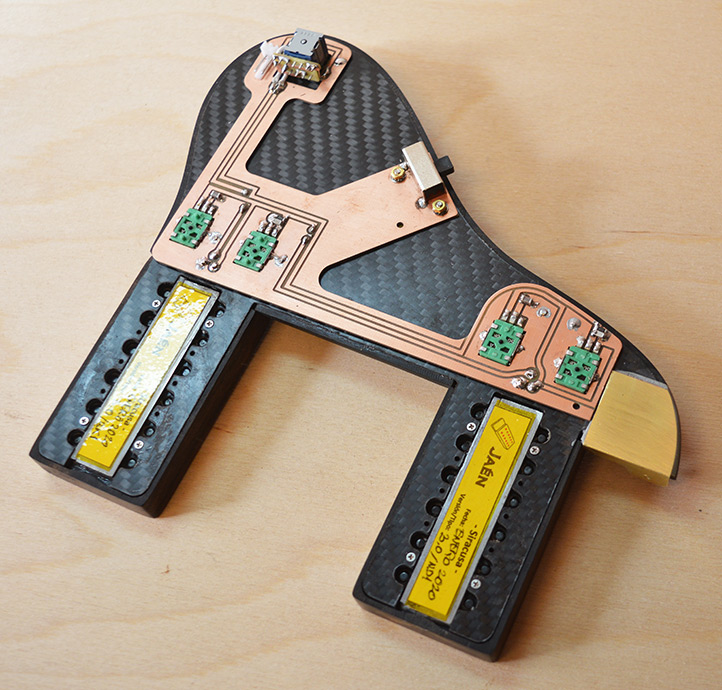
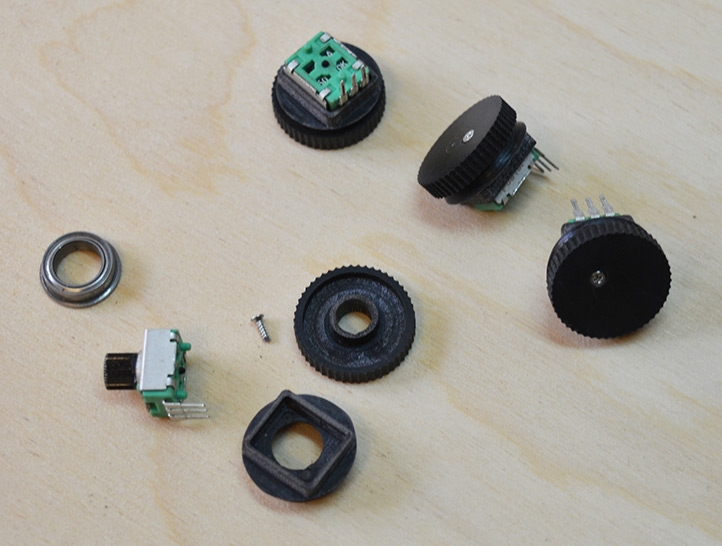
As the pickguard integrates all the controls and the pickups, it is quite heavy, around 280 grams. Consequently it needs very firm supports, so the attachment of the pickguard is made at two points, both recessed, as seen here:
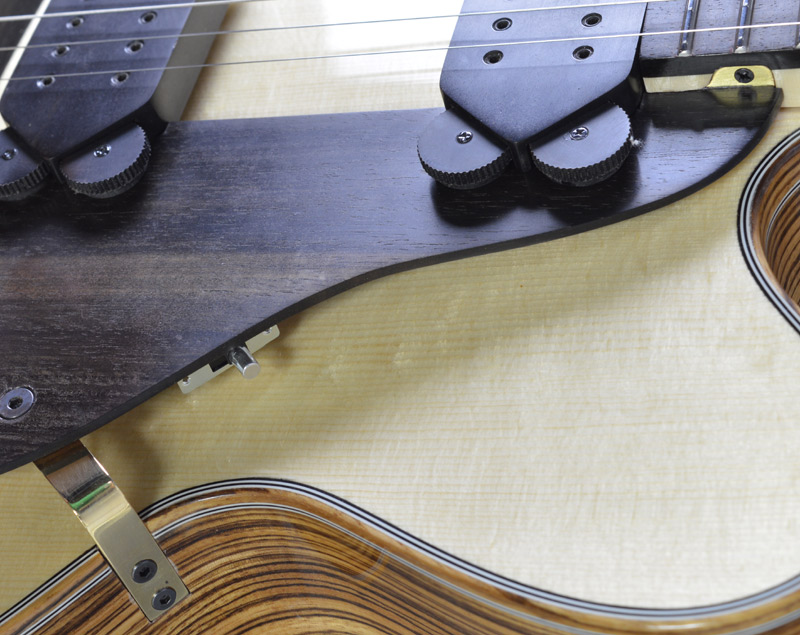
The output jack is located at the side, the usual location for most electric guitars. I didn’t want to put it below the pickguard, because most players don’t like it that way. Using a strapjack through the tail block was another option, but I find that conventional jacks are mechanically safer and longer lasting.
Regarding the tailpiece, it has a similar design to the one that I made for the 15-inch Siracusa, which places the grounding pieces totally inside the body of the tailpiece. However, it is a little shorter to compensate for the reduced soundbox length of this model (the Siracusa 16 is wider, but shorter than the Siracusa-15).
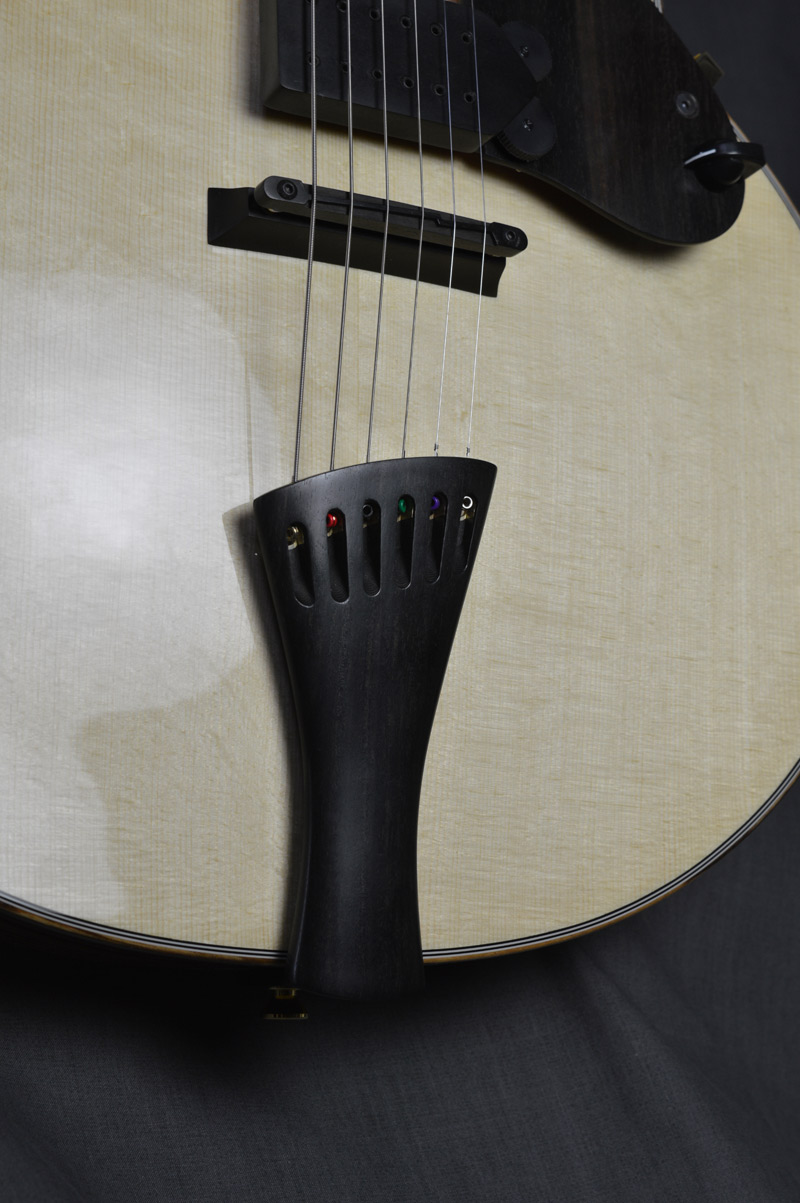
The bridge is taken directly from the Siracusa-15. The foot is hollow, very light. The saddle is made of ebony externally, but that is just the “skin”. It has a graphite core inside. The adjustment mechanism is smaller and lighter than the conventional thumbwheels.
If you have read the description you’ll know by now that there is no other guitar in the market like this. However, you must play one to understand how much common sense and care for both the tone and the player there is in the Siracusa series. I have made a priority to distribute these guitars as widely as I can. If you want to try one, please inquire.

